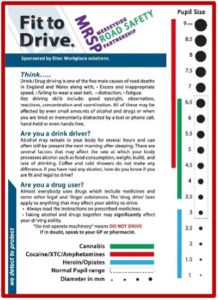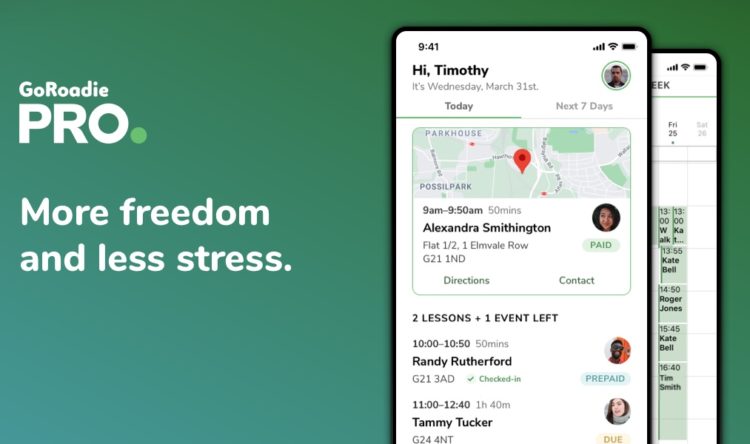Pills thrills and spills
Now is the time to educate learner drivers about the real-world issues of drug and alcohol driving!
ADIs have a legal obligation to explain and educate their students about the dangers of drug driving. It comes under the Health and Safety at Work Act 1974, section 3: General duties of employers and self-employed to persons other than their employees.
This states: “It shall be the duty of every employer and self-employed to conduct his undertaking in such a way as to ensure, so far as is reasonably practicable, that persons not in his employment who may be affected thereby, are not thereby exposed to risks to their health or safety.”
(See link for full details https://www.legislation.gov.uk/ukpga/1974/37/section/3)
Discussing drug and alcohol driving may be a very uncomfortable topic for ADIs to broach with students, but there is clear evidence available to show that when learning to drive is the time to deal with these issues head on.
Let’s look at some facts:
- There are 2.8 million recreational drug users in the UK between ages of 16 to 59-year-olds (1)
- Of these, 1.2 million (42.85%) are 16 to 24-year-olds (2)
- Drink driving offences have increased 250% since the start of lockdown in March 2020 (3)
- Drug driving offences have increased 400% during the same period (4)
- Offences are consistent across the year and not just the Christmas period! (5)
Popping the question
Having looked at the figures above, ADIs may be asking: ‘How do I deal with this?’ Probably, the best starting point is for ADIs to be better educated about the wider subject of drugs and alcohol misuse and their effects on driving.
The increase in mental health illnesses for 16 to 24-year-olds (the primary client market for ADIs) have been widely publicised during lockdown. Therefore, the rise in drug driving offences, although shocking, is probably not wholly surprising.
Most people relate drug driving to the ‘zero tolerance approach’ to illegal drugs:
- Cocaine – benzoylecgonine
- Cannabis – delta-9-tetrahydrocannabinol
- Ketamine
- LSD – lysergic acid diethylamide
- Crystal Meth – methylamphetamine
- MDMA – Methylenedioxymethamphetamine
- Heroin – 6-monoacetylmorphine
However, the high increase in drug failures during lockdown is partly due to the increased use of the nine ‘risked based approach’ legally prescribed drugs, as follows:
- amphetamine, for example dexamphetamine or selegiline
- clonazepam
- diazepam
- flunitrazepam
- lorazepam
- methadone
- morphine or opiate and opioid-based drugs, for example codeine, tramadol or fentanyl
- oxazepam
- temazepam
Prescribing safety
Most of the legally prescribed drugs are anti-anxiety or relaxants, which help with the treatment of mental health illnesses.
In addition, the most common over-the-counter medications that affect drivers are antihistamines to treat hay fever and strong cold and flu remedies.
Seeing straight
The next points for ADIs are to be able to identify the tell-tale signs of drug and alcohol use, and to understand how the different categories of drugs and alcohol affect driving ability. The three main categories being stimulants, depressants and hallucinogenic drugs.
The use of educational videos are great starting points as follows:
- Is the high worth the low? https://www.youtube.com/watch?v=I8bfcnbo5Yo&t=7s
- Drive like grans in the car https://www.youtube.com/watch?v=Gn2PusXJC6Q
In addition, the ‘Fitness to drive’ information leaflet from Merseyside Road Safety Partnership provides invaluable information for ADIs and students.

ADIs should spend more time with students discussing the legislation, penalties and consequences of drug and alcohol driving.
Good advice
Drivers should carry a copy of their prescription with them if they are taking any of the legally prescribed drugs. However, these drugs and over-the-counter medication can carry the same penalties and consequences as driving under the influence of illegal drugs.
Apart from the obvious ban, criminal record, potential prison sentence and future insurance issues, very few people know that travel can be prohibited to the USA, Canada, Australia and New Zealand (not exhaustive list) as well as future employment issues.
The following educational video – ‘If you could change’ – provides a very strong message indeed and can be viewed at the following link https://www.youtube.com/watch?v=oM1c9IU7qEg
Finally, ADIs can play out two mock real-life educational scenarios. This will equip students with experience of what could happened at the side of the road, if the police stop them on suspicion of driving under the influence of drugs or alcohol. These exercises are:
- Conduct an alcohol breath test using an approved single use tester
- Conduct a roadside impairment test using approved ‘beer googles’


Resources
If you would like to know more about any of these topics, leaflets, available training courses and testing equipment, please contact me on 07817 043824 or email me at [email protected] and quote First Car.
Next month: I will look at the question of whether ADIs should have to complete a certain amount of CPD hours each year focused on road safety.
Source (1) (2) (3) (4) (5) – D.tec International
Andrew Drewary is the Managing Director at Road Safety Smart







